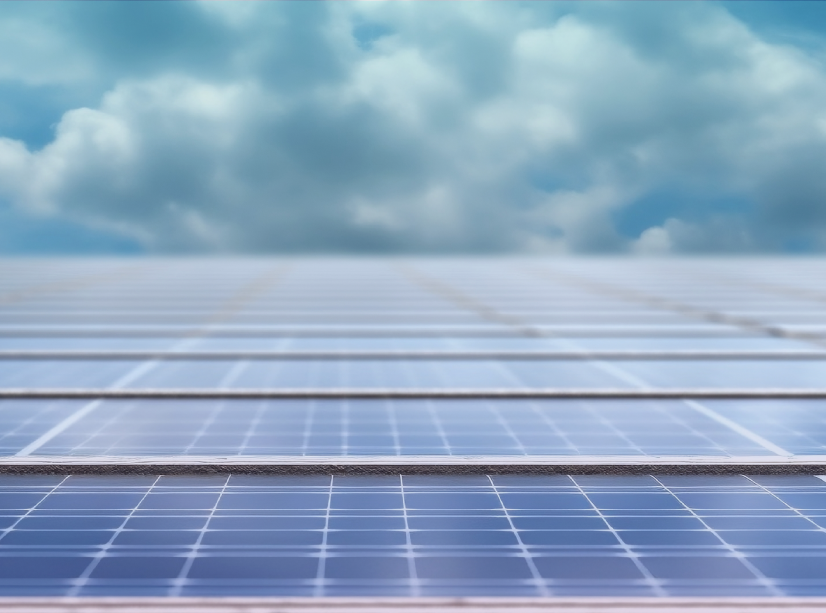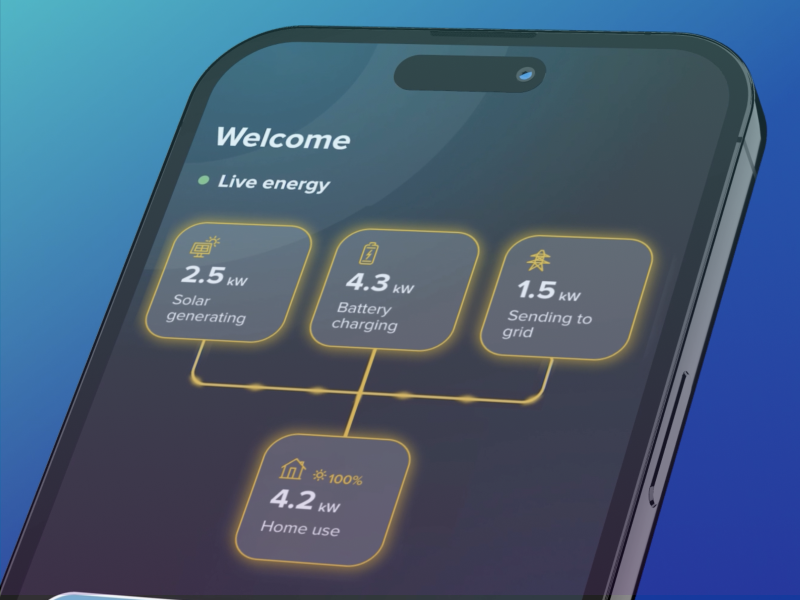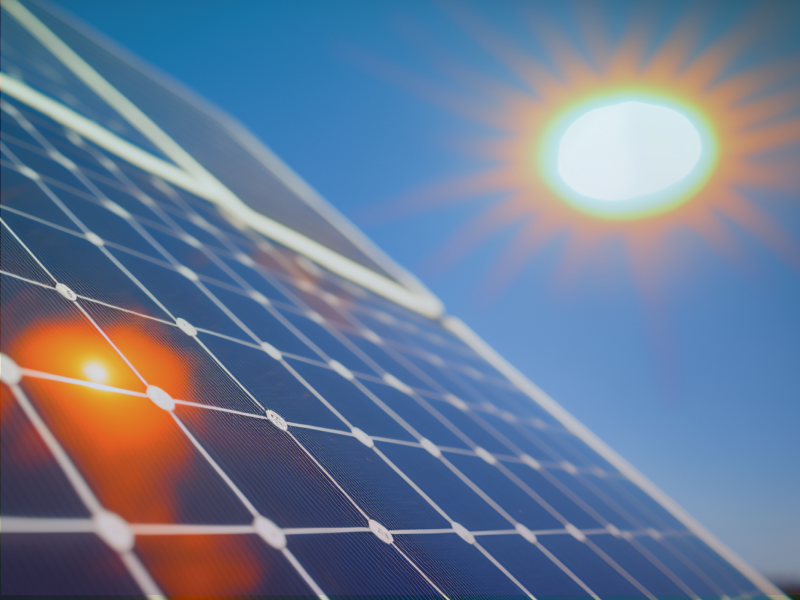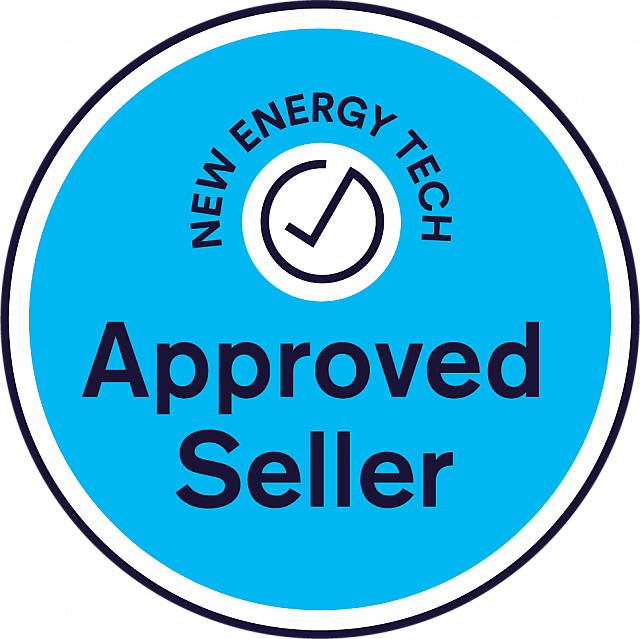Why summer is the ultimate time to consider solar & battery systems
As the summer sun graces us with its golden glow, many families around Australia are beginning to appreciate the potential it holds beyond warmer temperatures and longer days. This year especially, going solar could keep you from having to sweat sky high grid energy prices, increased risk of blackouts – and ultimately increased savings and energy independence.
1. Summertime means longer daylight hours
With longer summer days stretching to approximately ~14 hours, as opposed to winter’s mere ~10 hours of daylight, the potential for solar energy generation increases. With the above example this means that in ideal conditions your solar panels have the potential to produce up to 30% more energy in the summertime vs winter.
And remember, more sunlight in the evening hours can mean more savings*, especially if you have a solar battery and/or west facing roof solar panel installation to take advantage of these extended sunlight hours. This is because you may be able to use more solar energy during the peak hours when grid energy is at its priciest. With a battery, you can store any unused energy (for example when you are at work), to use when the sun sets and peak grid energy pricing kicks in (mornings and evenings).
2. El Niño effects forecasted to hit the energy sector hard this summer
The Bureau of Meteorology is indicating a hotter, drier summer with a 70% chance of an El Niño occurrence. While these scorching temperatures mean increased electricity consumption, they also signify potential disruptions in energy supply. The combination of higher demand (e.g. air conditioning) and lower supply, spells out the likely continuation of rising grid energy prices.
These same conditions can also mean grid energy generators can be compromised and don’t produce at full capacity. Generating electricity from burning fossil fuel such as coal and natural gas requires cooling to function. In heatwaves, cooling obviously becomes more difficult and many power stations fail to produce at their full capacity. They can even fail in part or in full, leading to blackouts that can affect hundreds of thousands of people.
Adding to the risks are potential bushfires. Just to give an idea, Essential Energy in NSW has over 163,000 km of its power lines in bushfire-prone areas serving hundreds and thousands of people. If the network becomes compromised or power plants are forced to shut down, solar panels and batteries can help safeguard your home during power outages and protect against skyrocketing energy prices.

3. Solar’s reliability, even on cloudy days
Let’s debunk the myth that solar panels stop working on cloudy or rainy days. Their efficiency might decrease, but they still produce energy. You are still saving money whenever power is still being generated by your solar system, even at a lower efficiency.
Rain also has a direct benefit on solar panels – especially if installed on a pitched roof. As it rains the water runs down the panels in effect hosing them down and cleaning them. In addition, solar panels have a self cleaning film on them which works together with the rainwater to clean your panels. Mopping, scrubbing, or cleaning your panels with any sort of soap or cleaning solution will strip the self cleaning film from your panels and you will have to regularly clean the panels for the rest of their life. So if someone tells you your panels need to be cleaned beware – this may create a longterm need to regularly clean the panels due to the self cleaning film having been ‘cleaned’ off. In short it is not needed and an extra cost that can be avoided.

4. Load shifting: plan to save even more with solar
As power prices continue to rise, and predicted to go even higher, especially with a long hot summer in store. People will be looking for other ways to save on energy, while not having to make big compromises in their home. Getting a solar system with a battery can help you achieve this because it facilitates a concept known as load shifting – which in simple terms means changing when in the day you use power.
Many families consume energy in the early morning and evening, when solar isn’t at its peak. Solar panels, batteries and the concept of ‘load shifting’ can remedy this. By using energy produced by your panels and storing any unused energy in your battery, you can bypass using more expensive grid energy to power your life.
In addition, modern appliances with delay functions or programmable timers further enhance this strategy, allowing you to set them to go off when solar panel production is at its highest. For example, set your air-conditioning to cool down your home during the day so you don’t need to turn it on before bed time to cool things down to the perfect sleeping temperature.
5. More control with the Powow energy management app
Moreover, with the Powow state-of-the-art energy management app, you can monitor your system’s energy production in real-time, allowing you to time your energy consumption to when your system is producing the most energy. You can also set the times that you want your home to use your battery through the app’s intuitive interface – for example when grid energy prices peak in early mornings or evenings.
You can even set your battery to charge from the grid when grid energy prices are low to offset your grid energy costs even further, all from one handy app. To find out about all the benefits the Powow app unlock watch out app walkthrough video.

6. Dwindling solar feed-in-tariffs:
Once, homeowners could bank on hefty feed-in-tariffs (FiTs) for solar energy contributions to the grid. But with FiT payments shrinking to next to nothing and energy prices soaring, the onus is on homeowners to adopt a different strategy to maximise savings from their solar system.
With the highest penetration of rooftop solar in the world, the summer sun makes an abundance of energy available to the grid from home solar systems, meaning retailers have to pay you less for solar energy produced by your panels.
7. ShineHub’s VPP – a collective powerhouse
When discussing the perks of going solar, it’s imperative to mention ShineHub’s groundbreaking Virtual Power Plant**. It can draw on the collective energy from 1000’s of solar batteries to help keep the grid stable when it most needs it. It feeds power back to the grid during high demand or to support the community during grid failures, or can help make up for lower production from struggling grid energy generators.
ShineHub’s VPP not only embodies the spirit of community energy but also provides a practical solution for energy fluctuations. Households connected to ShineHub’s VPP can sell excess energy back to the grid, further offsetting energy costs. You get paid $0.55 for every kWh discharged from your battery, a mighty improvement on solar feed-in-tariffs heading to $0.
Plus, with the increasing unpredictability of weather and the heightened risks mentioned earlier, the VPP acts as a collective buffer, ensuring more energy availability and stability.

In conclusion
As we dive into summer, we recommend that you look at solar to power your life. Contact for a quote today, and tap into this abundant source of energy, ensuring your home remains powered by affordable, reliable energy, your power bills stay low, and the electricity network stable with less blackouts.
A combined approach of solar panels, a solar battery, and load shifting could be the perfect approach to make the predicted long hot summer more bearable. Putting the control back into homeowners’ hands and keeping them from having to sell their energy to the grid for a pittance only to have to buy it back at a massive markup.
With all these compelling reasons, there’s no better time to embrace solar than now. Summer is here, and the sun is literally shining on your better energy future.
Don’t let summer pass you by. Request a quote today and make this the summer of solar.
*Savings vary according to individual circumstances. Terms and Conditions apply.
**Must sign up to the ShineHub VPP. ShineHub VPP terms and conditions apply.
The information provided on this blog is for general informational purposes only. We make no representations or warranties of any kind, express or implied, about the completeness, accuracy, reliability, suitability or availability with respect to the blog or the information, products, services, or related graphics contained on the blog for any purpose. Through this blog, you may be able to link to other websites that are not under our control. We have no control over the nature, content, and availability of those sites. The inclusion of any links does not necessarily imply a recommendation or endorse the views expressed within them. Contact ShineHub to confirm your eligibility. Terms and conditions apply.




